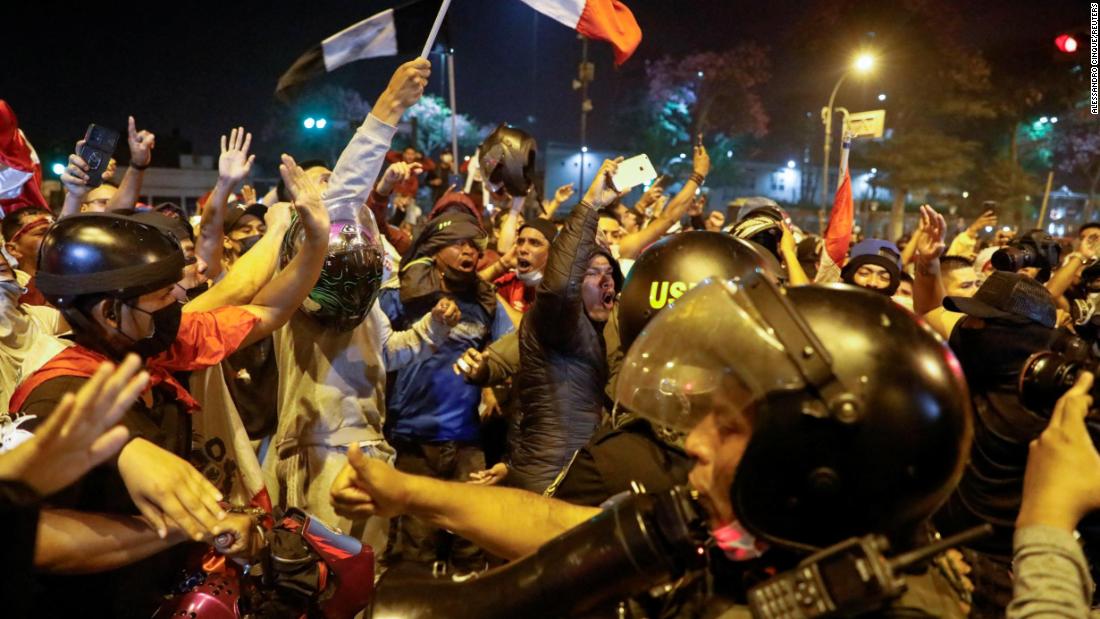Peru protests show the wide impact of Putin’s war
Rising fuel costs originally triggered the protests, which started last week, but quickly intensified into large anti-government demonstrations with marches and road blockades.
By Wednesday, at least six people had been reported dead over days of protests, according to Peruvian authorities, as officials called for calm and struggled to contain the situation. At least nine major roads in the country remained blocked by protesters.
Late Monday, President Pedro Castillo declared a state of emergency and placed the country’s capital under a curfew, but backtracked and withdrew the curfew order on Tuesday afternoon as hundreds of protesters ignoring the measure took to the streets of Lima to demand his resignation.
Blocks away, police in riot gear used tear gas to dispel protests and demonstrators threw stones, with at least 11 people injured in the clashes.
Why Peru?
But while Peru has been a fertile ground for protests in recent years, this crisis was triggered as a direct consequence of the war in Ukraine.
The long consequences of Putin’s war
The Russian invasion of Ukraine — and global leaders’ consequential decision to isolate Russia from the world’s oil markets — sent the price of oil soaring.
And for Peru, the impact has been particularly severe.
Compared to other countries in the region, such as Argentina or Venezuela, Peru imports most of its oil. That left it more exposed to the recent spike, hitting the economy just as it was recovering from the impact of the Covid-19 pandemic and lockdowns.
With prices rising so fast, it didn’t take long before protests started spreading across the country. And on March 28, a group of transport workers and truck drivers’ union called for a general strike to demand cheaper fuel.
Before becoming president, Castillo was a trade union leader and a teacher in a small school in the rural region of Cajamarca demanding better wages and working conditions.
Now his core constituency, the urban working class in the suburbs of Lima and rural farmers across the country, are particularly hard hit by the inflationary spiral, because they are paying higher prices for their food and for transport.
What happens next?
It is difficult to predict how the situation will evolve. Even before issuing the curfew order, Castillo had already made some concessions to protesters by cutting fuel taxes and increasing the minimum wage to 1,025 soles — approximately $280 — on Sunday. But that also failed to calm the streets.
After his curfew order backfired, the President appears to be running out of options, given that Peru does not have the capacity to control the international price of oil. As the conflict in Ukraine continues to rage, the current inflation climate is forecast to continue.
Any further subsidy to lower fuel prices would increase Peru’s debts and damage its battered finances even more.
However, Peru’s situation is far from unique and Castillo is not alone.
Other leaders are facing the same tough choices of how to handle rising inflation while trying to put their finances in order after the chaos caused by Covid-19.
As the crisis deepens, Peru could find itself looking to other countries for answers.
CNN’s Claudia Rebaza, CNN Español’s Jimena de la Quintana in Lima, Florencia Trucco in Atlanta and Jorge Engels in London contributed reporting.
For all the latest world News Click Here

